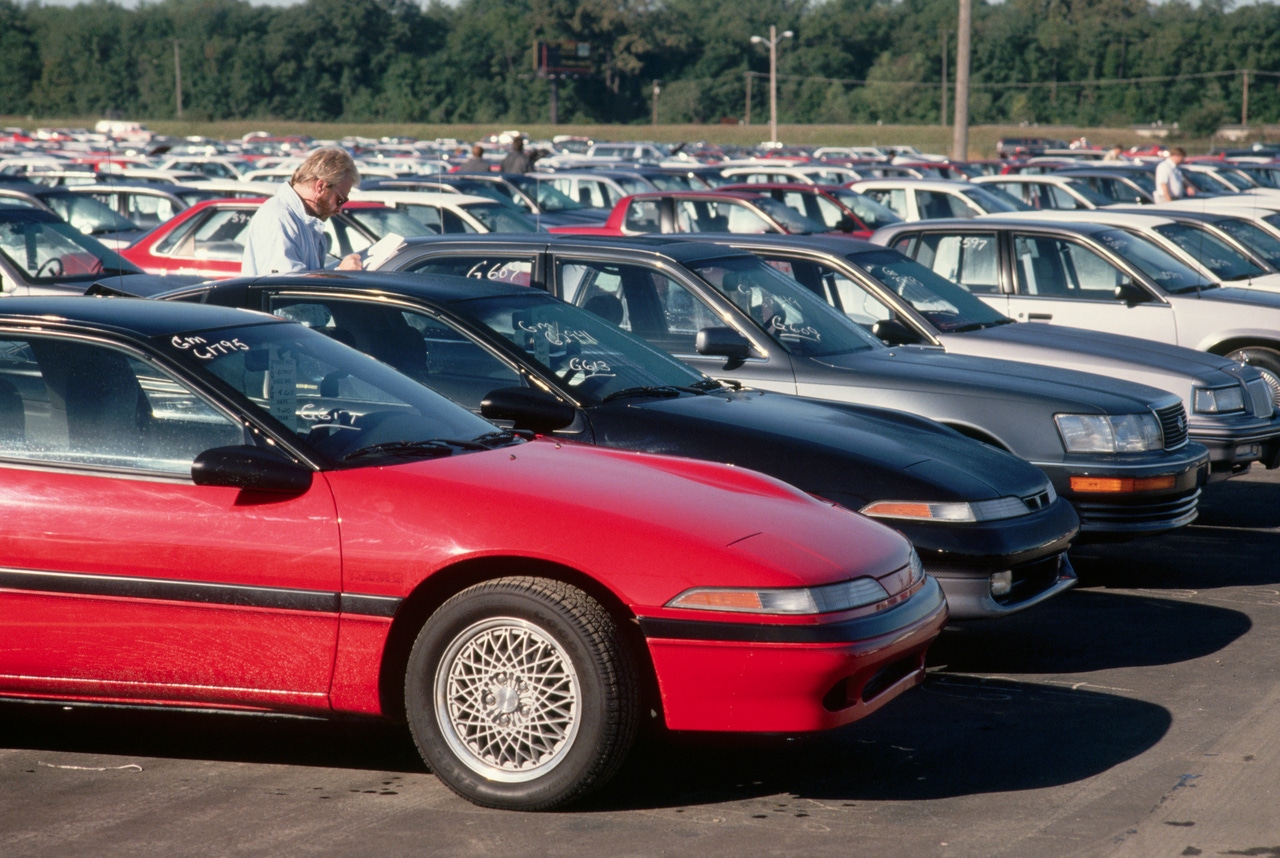Seasonal trends break as dealers race to beat looming tariffs.

Jim Henry, Contributor
April 10, 2025

Demand changes auction lane values and demand.Getty Images
Used-vehicle wholesale auction values inched down a fraction of a percentage point in March – statistically – but the dip masks a late-month surge in dealer demand, likely driven by tariff news, reports Cox Automotive. And while President Trump paused most tariffs for 90 days, those levied on autos, steel and aluminum are remaining.
“In the last week of the month, we saw price increases re-accelerate, and that’s not normal,” says Jeremy Robb, senior director for economic and industry insights, announcing March results for the Manheim Used Vehicle Value Index, part of Cox Automotive.
For the month, the Manheim Index tallied 202.6 – down 0.4% vs. March 2024 and down 0.7% vs. February 2025.
A Different Type of Spring
What’s “not normal” is the deviation in usual seasonal patterns, Robb says. March is typically a high point for used-vehicle sales due to tax refunds, but analysts expect auction demand to wind down at month’s end, Robb explains. This year, demand rose.
In addition, Robb says, in absolute terms, wholesale auction values increased, not decreased, in March vs. February – just not as much as March historically has outshined February. Therefore, the lower Manheim Index for March 2025 is lower statistically, because it’s a seasonally adjusted number, and March 2025 was a below-average month of March, he says.
Related:Dealers Brace for BEV, Tariff Price Crunch
“We’re definitely seeing price impacts right now in the auction lanes,” from the surge in demand starting in late March, Robb says.
The Manheim Index is a single measure designed to track used-vehicle wholesale price changes, weighted for a changing mix of product segments and mileage. The seasonally adjusted index is calculated relative to a starting point: January 1997 equals 100.
Springing Ahead
The increase in auction demand began around March 26, when it became clear the Trump Admin. was serious about enacting steep tariffs effective in early April after postponing them twice.
In the short term, new-vehicle sales should surge and discounting should fall, according to Cox Automotive. In the long term, the company expects manufacturers to cut production and deliveries of high-tariff vehicles and even eliminate some models from the U.S. market that the tariffs make virtually impossible to sell profitably.
Cox estimates the 25% tariff on imported new vehicles will hike the price to consumers of the average imported new vehicle by $6,000; the 25% tariff on parts imports will raise the price of the average U.S.-made vehicle $3,000. The separate 25% tariff on steel and aluminum imports will hike average vehicle prices an additional $300 to $500.
Related:EV Demand Holds Strong Despite Political Shifts
“Before” and “After” Tariffs
Besides increasing demand to add pre-tariff new vehicles on dealer lots, the new tariffs are also likely to generate more demand for used cars, as shoppers look to avoid higher new-vehicle prices.
A big question is what happens when dealerships run out of pre-tariff inventory, which on average should begin during late May
“There was definitely less than two months’ of supply,” of new vehicles when tariffs kicked in on April 3, says Jonathan Smoke, chief economist for Cox Automotive. “The key is when we exhaust pre-tariff supply.”

